Top Best Practices of Digital Marketing for Small Businesses
These days, having an online presence is mandatory, regardless of the size of your business, whether small, medium, or enterprise. Thus, our digital marketing for small businesses guide was designed for businesses wanting to step up their game yet not knowing precisely how to put things in motion.
Digital marketing is the foundation for all these efforts. From establishing an online presence to acquiring your first customers, growing your user base with different marketing tactics, and nurturing your target audience at every step.
Indeed, the digital marketing industry can be competitive, but let’s take your business to a different level instead of unthinkingly ignoring digital marketing’s power and ending up being left behind while irrelevant.
So, read further and take notes as we guide you through each step. From determining your business goals to creating a marketing strategy and extending your business offerings through lead generation, we are here to guide you.
Moreover, at the end of the article, there’s a special section dedicated to free and paid marketing tools and platforms that are helpful in your business marketing journey.
Article Key Points
- Start with a clear strategy;
- Content is king;
- Embrace SEO;
- Multi-channel approach;
- Track and analyze your results;
- Stay informed.
Digital Marketing for Small Businesses – How it Works?
Is digital marketing legit? Yes, and when discussing digital marketing for small businesses, it is essential to understand how it works to harness it to your business advantage better.
Therefore, digital marketing strategies tailored for small businesses can help them reach, engage, and convert their target audience more effectively than offline and traditional marketing efforts.
You must know your business goals and offerings, how these align with market supply and demand, and what users need. Once you have these established, you can research your target audience to align your products or services with them and speak to them in the same language.
How do you address your target audience? You start with your professionally built website and move on to different marketing channels, such as social media platforms, email marketing, Google My Business, and others.
The key here is to find the right balance between being relevant at the right time and with the right offering. We don’t say that this can be achieved from the start. Instead, think of it as a radio frequency that needs to be adjusted to catch your tune. If you manage it from the beginning, it’s even better!
Bonus points for your business if you understand Marketing vs. Advertising, Marketing vs. Social Media, Digital Marketing vs. Affiliate, or Content Marketing vs Social Media Marketing better to make the most of your marketing efforts.
Now that you understand digital marketing for small businesses, it’s time to break this concept down into small bite-sized pieces. This way, you can gain practical tips on how to put the wheels into motion.
Top 12 Best Practices of Digital Marketing for Small Businesses
In the following chapters, you’ll discover the top 12 best practices for digital marketing for small businesses. We divided it into three parts, as any robust tree develops: the roots, the trunk, and the crown.
Consider it the tree of your digital marketing that you nurture. In return for your (marketing) efforts, the tree will reward you with low-hanging fruits, such as new business opportunities.
So, let’s jump in!
The Roots of Your Small Business
1. What Are Your Business Goals?

We think it is essential to start by analyzing your business goals. What do you offer your potential customers, regardless of the product or service?
At this step, it is essential to consider your users’ experience to answer their needs and wants better. Creating a digital product or suite of services is worth nothing if people don’t need them.
The golden rule is to start SMART.
- Specific;
- Measurable;
- Attainable;
- Relevant;
- Time-Bound;
Please save this guide. Once you have completed this first and essential step, we are here to advise you further.
2. Create a Well Optimized and Mobile Friendly Website
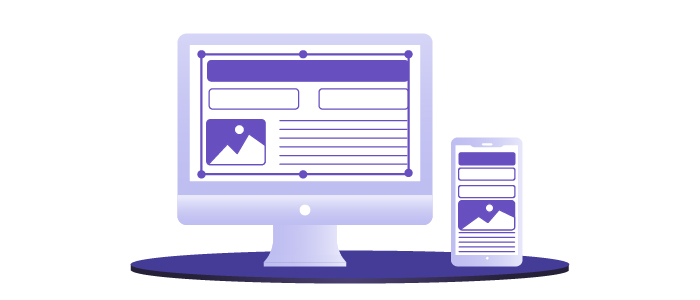
Now that you have your business goals, products, and services in order, it’s time to create the front entrance to your business: your mobile-friendly and SEO-optimized website.
Stay calm if you know little about SEO; we’ll discuss it in depth in the following chapters. Until then, work with a developer or UX designer to ensure a smooth user journey through well-thought-out architectural information. Then, place your keywords within the text of your website (titles, menus, microcopy, etc.).
Put yourself in your audience’s shoes and consider how they will navigate your website and how easily they will find information on it. Then, ensure your website is mobile-friendly, as 54% of all website traffic comes from mobile phones.
Additionally, if you are an e-commerce business, recent market research advises that mobile e-commerce sales reached $2.2 trillion alone last year. So, wouldn’t you want your business to hit close to those numbers?
3. Discover Your Target Audience

The next step when discussing digital marketing for small businesses should be the target audience. Thus, think of it as your tribe, your product or service advocates from the start, the butter to your bread.
You can’t sell something if you don’t know whom to sell it to.
By definition, a target audience is a consumer cluster that shares similar behavioral characteristics, demographics, age, location, gender, employment, income, and many others. These insights could clarify their actions so you can meet them (at least) halfway.
So, anything you create, advertise, and sell to them must be on point and answer their pain points. Thus, they decide whether your business is relevant for spending money on your venue, products, and services.
Since your website is up and running, you can start identifying your target audience through different marketing actions. First, you will use Google Analytics, create your buyer persona, and always check your analytics to refine your target audience.
4. Optimize Your Google My Business Presence

Depending on your business, you could enroll in the local SEO listings if you have a brick-and-mortar physical space. As a result, whenever a user searches for your or similar offerings, you will be listed.
You can add your business details, such as phone number, address, working schedule, website address, store pictures, products, and services.
So, optimize your Google My Business listing, ask for reviews, and ensure your business details are correct and constantly updated to appear in local search results.
Also, as part of your SEO efforts, don’t forget to optimize for voice searches, as more people use voice-activated devices to find local businesses.
The Trunk of Your Business
Now that your business is online and running let’s discover other ways to improve your marketing efforts, sales, and overall brand presence.
5. Create Your Digital Marketing Strategy
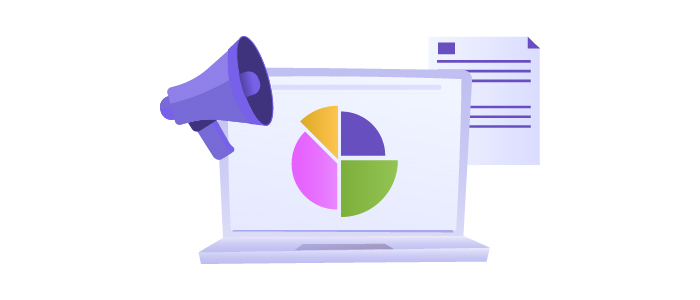
Before diving deeper into the waters, you’ll need an advanced digital marketing strategy. This way, you ensure you stay on the right track and that your efforts and resources will not be in vain.
Small Business Goals
There are many advanced marketing strategies, such as Inbound Marketing, Account-Based Marketing, Earned Media, and many others, but don’t get discouraged.
Depending on your business niche and industry, start with the basics and refine each type until you reach your desired outcomes.
So, look at your marketing strategy, not necessarily from a business perspective; indeed, we all want to get rich. Instead, think about your target audience and what you could do to meet them where they are.
But remember: in a specific, relevant, and timely manner.
Check Your Competition
You could look at your brand competitors and take notes regarding what worked and what is lacking to optimize it on your side better, as this can be done in any niche and industry.
For example, if you’re creating a digital product, you could also research your competitors on product and service review websites, such as G2 or Product Hunt. As such, you’ll see the unfiltered goods and bads of the competitors’ services or products.
Analyze and Reach Your Target Audience
As discussed above, analyzing your target audience is vital to promoting your products. So, ask yourself the following questions to gain crucial insights:
- What are the values and beliefs of my target audience?
- What are the online communities where my target audience gathers?
- What stage of the buyer’s journey are they typically in?
- How do they prefer to be communicated with?
- What common objections might they have to buying my product or service?
Once you’ve answered these, you can move on and put it into action with intention, attention, and a nurturing sense for them.
6. Content Marketing is King
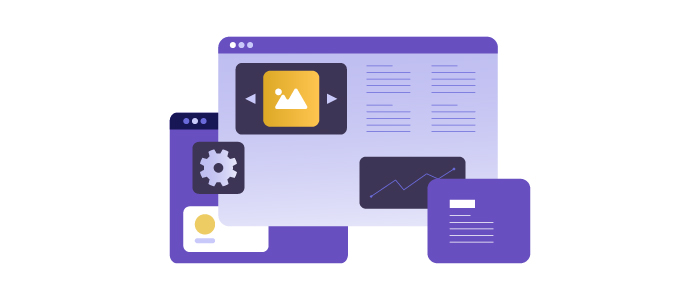
Content is king, never gets old, and is even more relatable than ever. Whenever discussing content marketing, we must include the basic SEO best practices, which we will discuss in the following chapters.
How to start? Just as you researched keywords for optimizing your website microcopy, the same way, through different platforms, you can search for exact match keywords and other tangential and contextual ones to create content based on them.
Types of content marketing deliverables:
- Educational blogs;
- Listicles;
- Product reviews;
- Infographics and research papers;
- Other formats depend on your niche.
Once your content is up and running, you can monitor it through different content metrics to ensure you’re on the right page and, if something fell short, to better optimize it.
At this point, we recommend you read a marketing specialty publication, such as AdTech.org. This way, you ensure you’re up to date with all the marketing notions, such as creating content pillars for your content strategy, the difference between B2B and B2C content marketing, and more.
Staying informed is part of the process and evolution!
7. Pay-Per-Click (PPC) Ads for Small Businesses
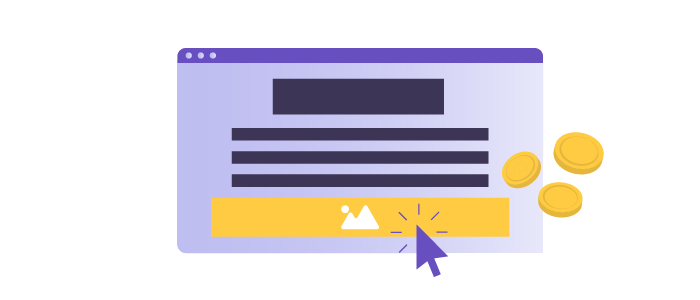
Let’s say you search Google for ads to sell on your website. The first result is from Sevio Ad Manager and is marked as Sponsored, right? This means it is a PPC ad, whereby Sevio paid Google to advertise its offerings based on your searched keyword.
Therefore, PPC helps businesses, from small to medium and big corporations, boost their visibility and increase traffic and sales. However, Pay-Per-Click campaigns are more appropriate for short-term goals than other digital marketing tactics, such as SEO.
The difference is that this specific traffic source will also stop when stopping your PPC campaigns. In contrast, through SEO tactics, the content is indexed by Google, and whenever someone searches for keywords related to your business, your business will pop up.
When to Use PPC?
- When you want immediate results, such as webinar participants.
- When you look for highly targeted traffic on social media platforms, web browsers, and others.
- When promoting a time-sensitive promotion, such as offering a 50% discount on a specific service package, it will only last for two days.
These aren’t the only times you can use PPC, yet it is trial and error, and you can always start small.
8. Social Media Marketing

Nowadays, anyone has a social media profile, regardless of the platform, such as Instagram, Facebook (Meta), LinkedIn, X (Twitter) and many others.
And it’s no wonder since social media ad spending is forecasted to reach $219.8 billion by the end of the year. By 2028, $255.8 billion of total ad spending will be generated through mobile.
Therefore, social media for businesses is part of its future, as your business can reach a global audience of potential customers while constantly gaining followers, which could turn into your brand’s consumers and advocates.
So, depending on your niche, audience, offerings, and what’s trending, you can find your go-to platform and authentic brand style for communicating with your tribe.
Generally, don’t brag about your business, but make social media an integral part of your strategy.
Let’s say you want to promote an NFT collection and know your audience is on X (Twitter). Therefore, you could post about a newly launched NFT airdrop to create a buzz and encourage users to enroll.
The NFT airdrop campaign could take place on your website, where users could perform different tasks, such as liking and following your social media account, referring others, and performing other daily tasks.
Thus, you use social media and make it part of the bigger picture, potentially acquiring new followers daily since you’re not spamming them and your posting is interesting.
9. Email Marketing

Email marketing has been around for quite some time, and it is one of the digital marketing pillars of cost-effective advertising. How does it work?
Email marketing is sending emails to a database, meaning your old and new user base, to promote your business products and services, inform and educate, offer the latest freebies, or provide your latest business update.
Moreover, this year’s email marketing revenue was projected to exceed $9.5 billion. Thus, why don’t start small, as the possibilities are endless, and you can segment your database based on the following:
- Awareness -Top of Funnel: These new leads need nurturing content that educates them about your industry and the problems you solve, such as blog posts, industry reports, or educational webinars.
- Consideration—Middle of Funnel: These prospects are actively considering multiple solutions, so it is best to provide content that showcases your product or service’s benefits and how it compares to competitors through product demos, case studies, comparison guides, etc.
- Decision – Bottom of Funnel: These subscribers are close to purchasing, so it is wise to focus on overcoming objections, highlighting special offers, and providing clear calls to action. You can achieve this through limited-time discounts, free trials, personalized product recommendations, and others.
Furthermore, instead of manually doing this, you could try out email automation platforms and see how it goes. Also, did you know that 58% choose email marketing automation over social media and content marketing?
Email marketing automation works on trigger-based actions within a workflow. You and your business goals design the workflow and determine what actions may be included. It sounds complex, right? It isn’t!
Let’s take, for example, the NFT promo collection. So, you send a bunch of emails to your target audience that has already interacted with your brand and to whom you already have their emails (in an ethical way, as many buy databases, yet users aren’t converting since it’s spam).
A trigger intervenes when the user performs your desired action, such as opening the email, clicking on your targeted link, or other actions, depending on your ultimate desired outcome. Once the trigger is successful, another email will be sent at the desired time and date, and so on.
Triggers could also be signing up for your newsletter, abandoning their shopping cart online, or even having a birthday, so endless possibilities exist.
The key benefits here are flexibility, hyper-personalization, and cutting down resources, as you only need someone to logically design the workflow and write the content of the emails.
The Low-Hanging Fruits and Scaling Your Business
Depending on the results of your first marketing efforts, you can adjust and optimize your marketing strategy better. Thus, we divided this guide into three main sections and reached the last part, which discusses low-hanging fruit and scaling your business up.
But when do you know it’s time to improve your business? We don’t say it, and your managers won’t; only the data knows! As a famous quote said, data-driven decisions are the future, so let’s see how you can analyze your data besides other extensive tactics.
10. The Power of Customer Service, Chatbots, and Reviews

Customer service makes the world go round, and businesses often need to understand that it is a crucial factor in attracting, nurturing, and retaining customers.
Many aspects can be improved, changed, or added, from robust and well-written help guides to dedicating an entire page to customer inquiries, having a technical support team, and using AI (Artificial Intelligence) chatbots.
When discussing AI-powered Chatbot services, they could work tirelessly 24/7 to provide support and alleviate your customer’s pain points and dilemmas.
They can answer the most frequently asked questions for multiple industries, such as e-commerce and retail, SaaS products, healthcare, etc.
11. Account Base Marketing and Lead Generation
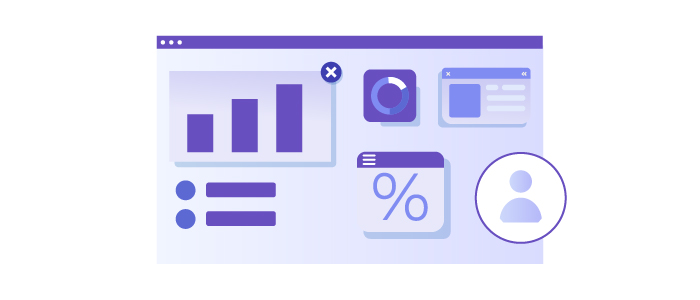
Another digital marketing strategy that small businesses could approach is account-based marketing and lead generation, which are B2B tactics that target customer acquisition. Allow us to break them down:
Lead Generation focuses on attracting larger pools of potential customers based on different target audience characteristics. It can be broken down depending on the buyer’s journey. Furthermore, lead generation can use content marketing, social media, and other marketing tactics to draw the attention of a wider audience.
In contrast, account-based marketing focuses on hyper-targeting a well-defined list of prospects and high-value accounts. ABM addresses decision-makers through personalized campaigns, messaging, and content appropriate for each prospect’s needs and challenges.
The success of such marketing efforts is measured through closed meetings, secured deals, and ROI. For B2B companies, ABM and lead generation are usually done through LinkedIn. Yet other platforms aren’t excluded, as the goal is to generate qualified leads.
Read further and discover the (Free) Tools and Platforms for Getting Started section, discussing some of the most essential paid and free tools for getting started.
12. How Do You Measure the Success of Your Business?

Indeed, digital marketing for small businesses may require creative resources compared to a corporate marketing team. However, you could achieve excellent results with the proper guidance and mindset.
So, let’s look at essential digital marketing metrics for small businesses.
Website Traffic
How many monthly web visitors do you have, and from what traffic sources, such as social media, organic, and referral, do they come?
Once you pinpoint this, you can strategize further about what doesn’t perform well or allocate your resources to what works already.
Conversions
How many web visitors converted?
Depending on your business niche, they could purchase, complete a contact form, and do other things. By analyzing conversions, you could discover what marketing campaigns worked in generating leads or sales.
Engagement
For social media-driven businesses, engagement analyzes the likes, comments, shares, click-through rates, and other specific ones to gain insights into the audience and content performance.
Depending on the niche, you could also consider Return on Investment, Customer Acquisition Cost, Customer Lifetime Value, and others.
Top 11 Free and Paid Tools and Platforms for Getting Started
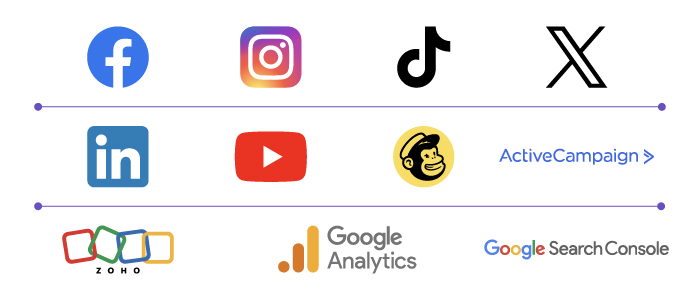
When discussing digital marketing for small businesses, we must also discuss free and paid tools for getting started. So, let’s dive in!
Social Media Marketing Tools and Platforms:
1. Facebook (Meta)
Facebook is still a leader within its niche, and an increasing number of businesses integrate it into their strategy game to be closer to their community. From paid ads to a marketplace and community-building features, Facebook is good for building brand awareness.
2. Instagram
Instagram is another social media medium for small businesses. Yet, the key to success depends on your business niche, as it is used for sharing pictures, reels, and lives.
However, you could also use it to run paid ads and meet your target audience where they spend their time. Since Facebook owns it, you can easily sync these two.
3. TikTok
This video app could be a good asset for creating product reviews, testimonials, and other educational video content, as its user base has grown since its launch.
4. X (Twitter)
X is the one to go for sharing quick, on-the-spot thoughts, also known as tweets. As you can share text and images, X (Twitter) could help you settle your presence as a thought leader. Just look at Elon Musk, right?
5. LinkedIn
LinkedIn has been a tool for professional networking. However, this is a more extensive scope, as many B2B businesses run ads, write blogs, and share their expertise and knowledge within their industry.
Moreover, you could use LinkedIn for account-based marketing, from prospecting the market to delivering hyper-personalized messages before converting them.
6. YouTube
YouTube slowly became the next Google video search medium, as many individuals and businesses use it to learn, advertise, and promote their products and services.
Thus, regardless of size, it has become an essential marketing tool for many businesses.
Email Marketing Tools:
7. MailChimp
MailChimp is one of the most popular email marketing tools. It offers both paid and free plans, which makes it appropriate for small businesses to get started.
With different marketing options, landing page builders, auto-responses, and others, MailChimp is a robust, beginner-friendly option.
8. Active Campaign
Active Campaign is another suitable option for small businesses. It allows automated email communication based on the various characteristics of your target audience.
Remember what we discussed about email automation? This email marketing tool lets you set triggers based on the prospect’s behavior, ensuring your emails reach their target at the right time.
9. Zoho Campaigns
Zoho offers multiple email marketing features, including free and paid plans that allow email automation, a drag-and-drop email editor like HubSpot’s’, and an easy-to-integrate CRM.
SEO Marketing Tools:
10. Google Analytics
Google Analytics is a great free tool for small businesses to improve their ROI. It provides vital insights and data to help you better understand your customers and act.
Therefore, you can discover how users found your business, whether they visited your website, and how long they spent on it, among other great features.
11. Google Search Console
Google Search Console is part of the Google family but is directly intended for SEO practices. Consequently, you could monitor your website’s performance and learn more about how your content ranks in search engine results.
Final Thoughts
Remember, the key to success lies in understanding your target audience, crafting compelling content, and strategically leveraging various marketing channels.
By following these steps and leveraging the resources provided throughout this guide, you can establish a solid digital presence and achieve your small business marketing goals.